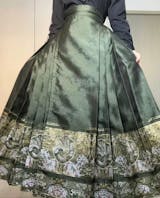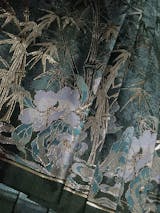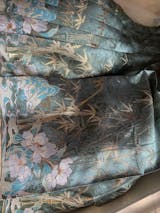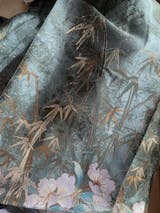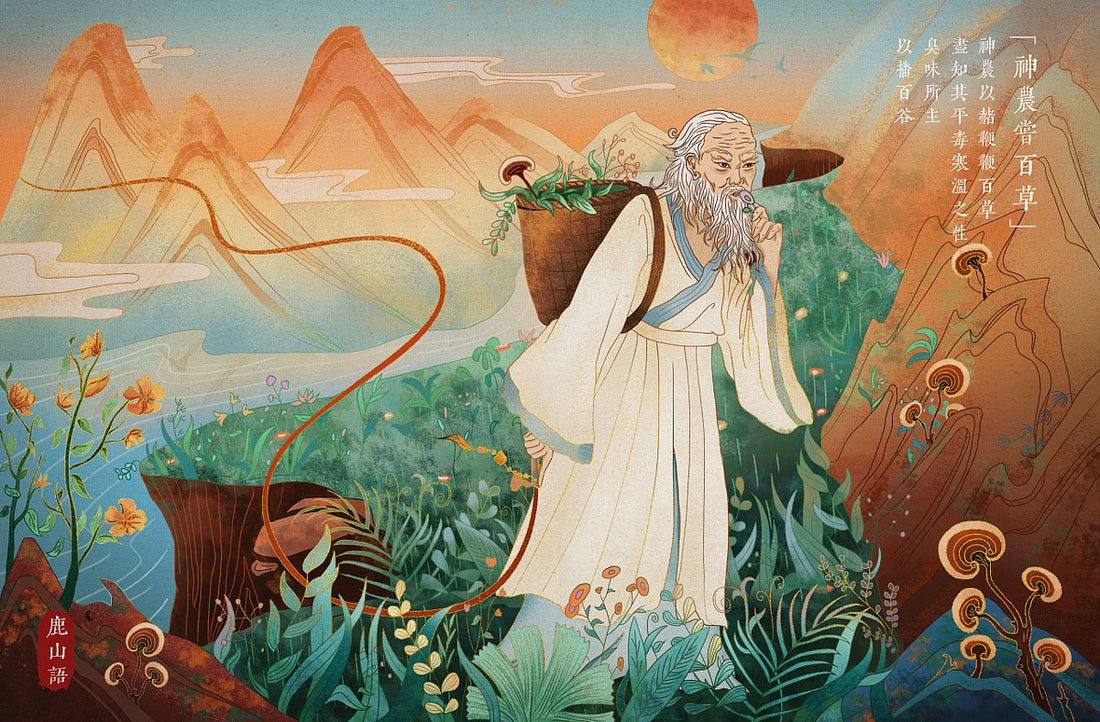
The Earliest Chinese Medicinal Book "Shennong Bencao Jing" - Shennong's Taste of Hundred Herbs to Save the Lives of the People
Part Ⅰ: The birth of Shennong
After Nüwa repaired the heavens, it is said that many years later, a child was born in a cave on Mount Lie. This child was Shennong. Interestingly, as soon as he was born, nine springs naturally emerged around the cave. The water from these nine springs were interconnected, so if you took water from one of them, the other eight would also fluctuate.
According to legend, Shennong had a pair of ox horns on his head, and his abdomen was almost translucent, allowing one to see his internal organs and even the food he ate. At the age of three, he already possessed knowledge of agriculture and farming. As he grew up, he became the leader of the Jiang tribe and was revered as "Yandi."
Part Ⅱ: Planting the Five Grains
In ancient times, the five grains and weeds grew together, making it difficult to distinguish them. People sustained their lives by gathering weed seeds, picking wild fruits, and hunting. As the birds in the sky were caught less and less and the land animals became scarce, people had no choice but to go hungry.
One day, Yandi saw a red bird carrying something like seeds, flying around him and continuously chirping. The bird eventually spat out the seeds onto the ground. Yandi picked them up, and the bird flew around him three times before chirping again and flying away. Yandi believed that these were food seeds sent by the heavenly emperor through the red bird. He then buried the seeds in the soil and taught people to loosen the earth with a wooden plow, irrigate the seedlings with well water, and cultivate the crops.

That autumn, a large area of crops matured. People were delighted and grateful for the merits of Yandi, as he had taught them how to sow and cultivate the five grains. Therefore, they honored Yandi as the "God of Agriculture," also known as " Shennong." The surrounding tribes referred to Yandi's tribe as the Shennong tribe and called him " Shennong Shi", meaning the leader of the agricultural tribe.
Part Ⅲ: Free Trade and Barter Exchange
In primitive society, there was a practice of bartering goods for goods. One day, Yandi visited a tribe located near the mountains and forests, where he observed wild beasts hunted by the locals being thrown away indiscriminately. Upon inquiring, he discovered that the area was abundant with wild animals, and the surplus meat couldn't be consumed. On another occasion, he went to a different tribe and noticed they were discarding large quantities of millet and grains. Yandi found this wasteful and expressed his regret. The locals replied with a smile, "There's nothing to regret. In a few days, new crops will ripen."
As a result, Yandi and several tribal chiefs discussed and decided to establish a regular practice. Every ten days, at noon, everyone would bring their excess items to a designated location (a marketplace) and exchange them for things they needed. People enthusiastically agreed and joyfully brought their surplus items to the marketplace for exchange. The scene was bustling with people constantly coming and going, creating a lively atmosphere. Here, people exchanged their surplus items for the things they needed, practicing barter trade where goods were exchanged directly, ensuring that everyone got what they required.
This marked the beginning of barter trade and the establishment of midday markets. It symbolized a form of free trade in primitive society, characterized by the pure and simple nature of its inhabitants' lives.
To encourage people to live according to a regular rhythm, and cultivate seasonal crops, Yandi (also known as Shennong) devised a calendar, established celestial bodies, distinguished between day and night, determined the solar and lunar cycles, set a month as thirty days, and designated the eleventh month as the winter solstice.
Part Ⅳ: Tasting Hundreds of Herbs, Writing the Classic of Materia Medica
People learned farming from Shennong, ensuring an abundant food supply and no longer worrying about starvation. However, despite this progress, life on Earth remained fraught with hardships. Every spring, the legendary sea god and wind god brought plagues and diseases to humanity. Venomous snakes and fierce beasts attacked humans with their venomous fangs and stingers, jeopardizing people's health. People often fell ill, and when they did, they didn't know what to do. They would tough it out, and if they couldn't, they would die.

Seeing the suffering of the common people, Shennong took it to heart. He began to ponder and meditate, determined to taste hundreds of herbs, identify their medicinal properties, and relieve people's suffering from disasters and diseases.
Shennong thought of the divine flowers and rare herbs in the Heavenly Emperor's garden, thinking that they might be able to cure diseases. So he climbed to the heavenly palace from Jianmu in the fields of Duguang. In the Heavenly Emperor's garden, he gathered a large bunch of Yao grass. As he was leaving the garden, he encountered the Heavenly Emperor. The Heavenly Emperor said that this amount of Yao grass could not cure many people's illnesses. So, he gave Shennong a divine whip. Wherever the divine whip went, it could identify whether herbs were poisonous or not, and it could also be used to drive away fierce beasts.
One day, he came across a type of tree leaf when he was feeling thirsty. Without thinking much, he plucked a few leaves and chewed on them. His stomach was transparent, and he could see the leaves cleansing his stomach thoroughly. This discovery brought him great joy. He concluded that these leaves could not only quench thirst but also detoxify the body. He decided to change the use of the whip to tasting herbs, and if he encountered any poisonous ones, he would use it to save himself. (According to legend, Shennong's stomach was completely transparent. If he consumed a poisonous herb, his internal organs would turn black, allowing him to easily determine which part of the body the herb affected.)
He named these small leaves "Cha" (meaning to inspect). In later generations, when people read it in vernacular Chinese, it became "tea." Shennong continued his journey, tasting various herbs along the way. If he got poisoned, he would use "Cha" to save himself. In this manner, Shennong and his subjects set off from their hometown of Suizhou, Lishan, heading towards the northwest mountains where the most medicinal herbs grew. They crossed one high mountain after another, their legs swelling and their feet calloused, but they kept on walking. They walked for a total of forty-nine days, finally arriving at the foot of a vast mountain.

The upper half of the mountain was hidden in the clouds, surrounded by sheer cliffs with waterfalls cascading down and moss growing on the sides. Beside them grew exotic flowers and unusual plants, their fragrance permeating the air from afar. Just then, Shennong spotted several golden monkeys climbing along the ancient vines hanging from the cliff and decaying logs between the cliffs.

With a clever idea, Shennong called his subjects over and instructed them to chop wooden poles and cut vine strips. They built a scaffolding against the mountainside, adding a layer each day. They worked tirelessly from spring to summer, from autumn to winter, unaffected by wind, rain, or even snow and ice. They never stopped working. After a whole year, they had constructed 360 layers, reaching the mountain's summit. Shennong led his subjects up to the mountaintop using the scaffolding, where they found the mountain covered in lush flowers of various colors: red, green, white, yellow, and many more, densely clustered together. Shennong was overjoyed.
In order to taste the various herbs here and find medicinal plants for the common people, Shennong instructed his subjects to plant rows of fir trees on the mountain as a defensive wall against wild beasts. They built thatched huts inside the wall to live in. During the day, Shennong led his subjects to taste the various herbs on the mountain. After tasting each flower or plant, he had people record their medicinal properties: which ones were bitter, which ones were poisonous, which ones were hot, which ones were cold, which ones could alleviate hunger, which ones could heal diseases, all written down clearly. He tasted and identified 365 different herbs and compiled them into the "Shennong's Classic of Materia Medica." He instructed his subjects to bring it back and use it to treat illnesses for the people all over the world.

Shennong tasted countless herbs and often suffered from poisoning. It is said that he tasted a total of 398,000 different types of flowers, plants, roots, and leaves. There was one instance when he encountered seventy highly toxic substances in a single day, but he used "cha" to neutralize these poisons. Once, while tasting herbs, he was poisoned and fell unconscious. Luckily, he was saved by a bright red Lingzhi grass, which expelled the toxins from his body and revived him. From then on, people said that Lingzhi grass had the power to bring the dead back to life.
Later, in the Baicao Swamp on the sides of Xiaobei Peak, Shennong discovered a vine-like plant with yellow flowers climbing on a tree. He took some leaves and chewed on them, unaware that it was a highly toxic herb. Immediately after consuming it, Shennong's liver and intestines were torn apart, causing his death. This herb came to be known as "Duanchangcao".
Shennong sacrificed his own life for the benefit of the people. In order to commemorate his kindness and achievements, people revered him as the Divine Farmer and built the Temple of the Divine Farmer. The wall paintings in the temple depict his major accomplishments throughout his life, including reclaiming wasteland, sowing the five grains, digging wells for irrigation, establishing markets at noon, tasting various herbs, and making pottery.

In the region where Sichuan, Hubei, and Shaanxi meet in China, it is said to be the place where Shennong tasted hundreds of herbs. In honor of his achievements, this area is called the Shennongjia Mountain Region. The story of Shennong will forever be sung by people.


